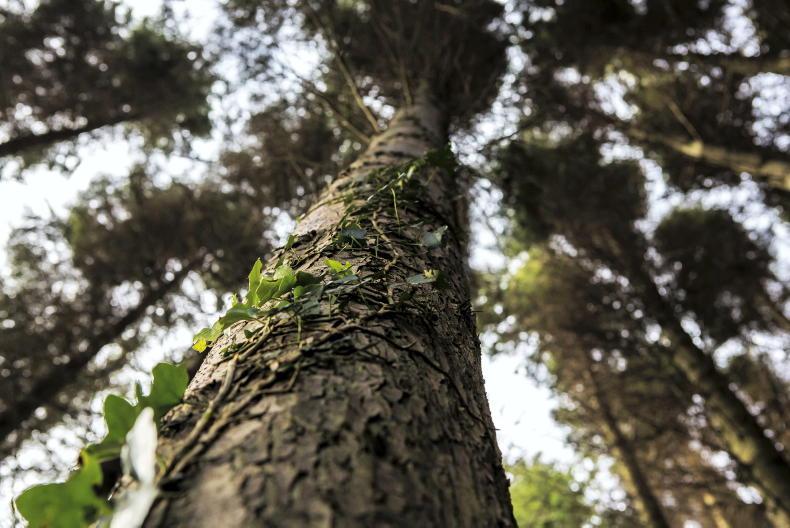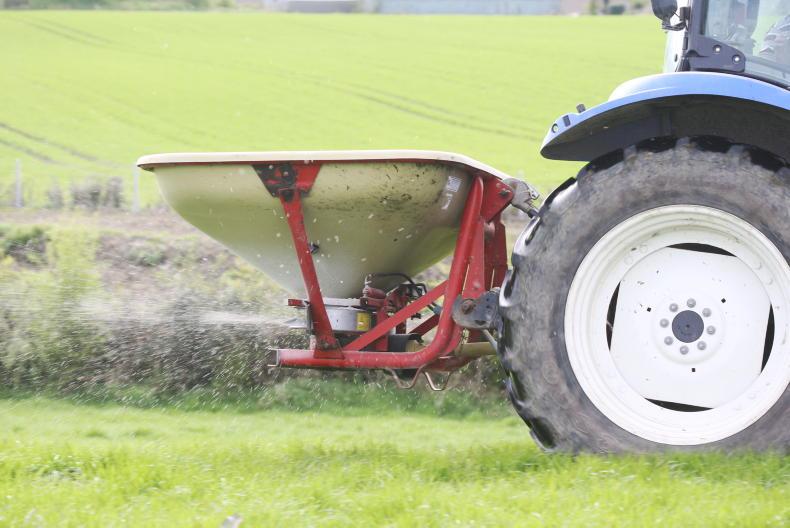Over half (56%) of Ireland’s native plants are in decline, either in range or abundance, or both, according to a 20-year mapping exercise by the Botanical Society of Britain and Ireland (BSBI).
Analysis of as many as 2.85m plant records of 1,939 species, half of which are native, show that Ireland’s native grassland plants are most impacted.
However, in its plant atlas, the BSBI found that many non-native species such as the now country-wide Sitka spruce are on the rise, in terms of distribution and numbers.
In total, 80% of such non-native plant species introduced into Ireland since 1500 have increased.
Biodiversity loss
The BSBI found that habitat loss and degradation continue to be the main drivers of the loss of the country’s native plant biodiversity.
It also noted that while an impact is anticipated, as of yet, climate change has only had minor effects on plants.
From the outset of its plant atlas, the BSBI sets out that plant biodiversity is essential for sustainable farming, even livestock farming, as all livestock eat plants.

Sitka spruce, as a non-native species, has increased in abundance due to Ireland's forestry policy. \ Philip Doyle
However, the group hones in on agriculture, particularly intensive farming, as one of the key drivers of native grassland plant species decline.
“Grasslands are among the most threatened habitats internationally because of the changes in farming practice that have been taking place: mechanisation, use of herbicides and inorganic fertilisers, installation of drainage, reseeding of old pastures and a switch from hay and farmyard manure to silage and slurry,” said the BSBI.
The plant atlas suggests that it is the loss of wild grassland plant species on less fertile soils that is the biggest issue.
“These ‘semi-natural’ grasslands supported a large number of our characteristic native species, including many orchids. They were maintained by extensive grazing or by the cutting of hay in mid- to late summer.
“Converting these habitats rich in species into more intensively managed grassland or in some cases abandonment to scrub has led to the loss of many species that could not compete in the altered environment,” the report reads.
Nitrogen
The BSBI also highlighted nitrogen levels as another contributor to native grassland plant species decline.
It said that “for the most part, native grassland species require low levels of fertility.

Some native grassland plants cannot survive in highly fertile soils, made so through nitrogen use.
“They cannot compete successfully at higher levels. It may at first seem counterintuitive that high fertility levels could be inimical to plant diversity, but there is now a very large body of evidence pointing in this direction.
“We can conclude that grassland plants generally are in trouble, with the exception of those few species that thrive in highly fertile conditions,” the group said.
Good news
It is not all bad news for the protection of Ireland’s native plants and the control of invasive species.
Woodland bluebells have increased in range and abundance, for example.

Over half of Ireland's native plants are in decline.
Corn marigold, an invasive annual plant, introduced in neolithic times, has been pushed back to mainly coastal arable areas, notably Co Wexford, and is now far less common.
The plant had been found in farm crops and occasionally on other disturbed ground such as roadsides and waste ground.
It was formerly a serious weed of spring-sown cereal, but is now much reduced by improved husbandry, seed cleaning and herbicides.
Read more
Coolmore Stud challenged over alleged extensive hedgerow removal
All farmers now to meet minimum space for nature requirement
Over half (56%) of Ireland’s native plants are in decline, either in range or abundance, or both, according to a 20-year mapping exercise by the Botanical Society of Britain and Ireland (BSBI).
Analysis of as many as 2.85m plant records of 1,939 species, half of which are native, show that Ireland’s native grassland plants are most impacted.
However, in its plant atlas, the BSBI found that many non-native species such as the now country-wide Sitka spruce are on the rise, in terms of distribution and numbers.
In total, 80% of such non-native plant species introduced into Ireland since 1500 have increased.
Biodiversity loss
The BSBI found that habitat loss and degradation continue to be the main drivers of the loss of the country’s native plant biodiversity.
It also noted that while an impact is anticipated, as of yet, climate change has only had minor effects on plants.
From the outset of its plant atlas, the BSBI sets out that plant biodiversity is essential for sustainable farming, even livestock farming, as all livestock eat plants.

Sitka spruce, as a non-native species, has increased in abundance due to Ireland's forestry policy. \ Philip Doyle
However, the group hones in on agriculture, particularly intensive farming, as one of the key drivers of native grassland plant species decline.
“Grasslands are among the most threatened habitats internationally because of the changes in farming practice that have been taking place: mechanisation, use of herbicides and inorganic fertilisers, installation of drainage, reseeding of old pastures and a switch from hay and farmyard manure to silage and slurry,” said the BSBI.
The plant atlas suggests that it is the loss of wild grassland plant species on less fertile soils that is the biggest issue.
“These ‘semi-natural’ grasslands supported a large number of our characteristic native species, including many orchids. They were maintained by extensive grazing or by the cutting of hay in mid- to late summer.
“Converting these habitats rich in species into more intensively managed grassland or in some cases abandonment to scrub has led to the loss of many species that could not compete in the altered environment,” the report reads.
Nitrogen
The BSBI also highlighted nitrogen levels as another contributor to native grassland plant species decline.
It said that “for the most part, native grassland species require low levels of fertility.

Some native grassland plants cannot survive in highly fertile soils, made so through nitrogen use.
“They cannot compete successfully at higher levels. It may at first seem counterintuitive that high fertility levels could be inimical to plant diversity, but there is now a very large body of evidence pointing in this direction.
“We can conclude that grassland plants generally are in trouble, with the exception of those few species that thrive in highly fertile conditions,” the group said.
Good news
It is not all bad news for the protection of Ireland’s native plants and the control of invasive species.
Woodland bluebells have increased in range and abundance, for example.

Over half of Ireland's native plants are in decline.
Corn marigold, an invasive annual plant, introduced in neolithic times, has been pushed back to mainly coastal arable areas, notably Co Wexford, and is now far less common.
The plant had been found in farm crops and occasionally on other disturbed ground such as roadsides and waste ground.
It was formerly a serious weed of spring-sown cereal, but is now much reduced by improved husbandry, seed cleaning and herbicides.
Read more
Coolmore Stud challenged over alleged extensive hedgerow removal
All farmers now to meet minimum space for nature requirement









 This is a subscriber-only article
This is a subscriber-only article










SHARING OPTIONS: